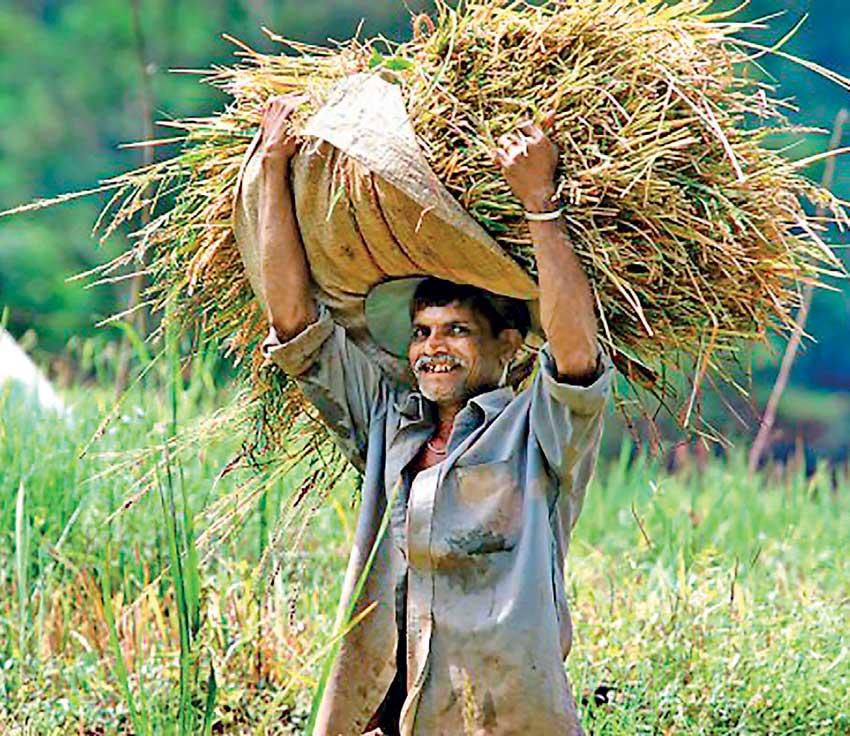20 Oct 2022 - {{hitsCtrl.values.hits}}

 Sri Lanka’s economic crisis continues to affect the lives and livelihoods of its people, with the burden being highest on the poor and vulnerable. The situation has progressed from bad to worse, with debt problems spiralling down to impact every aspect of the economy adversely.
Sri Lanka’s economic crisis continues to affect the lives and livelihoods of its people, with the burden being highest on the poor and vulnerable. The situation has progressed from bad to worse, with debt problems spiralling down to impact every aspect of the economy adversely.
Sri Lanka’s food crisis
Global disruptions including COVID-19, the climate crisis and Russia’s invasion of Ukraine earlier this year, have impacted food supplies worldwide. However, Sri Lanka’s food insecurity is largely a result of the prevailing economic crisis coupled with short-sighted policies enforced by local policymakers.
The overnight ban on chemical fertiliser imports has been costly and generated a lower harvest. Although the ban has since been reversed, it continues to have ripple effects on the food system.
The drastic drop in domestic yield has driven policymakers to spend more money importing necessary commodities previously produced locally, including staples like rice. This move has been detrimental at a time when foreign reserves are lacking. Additionally, import controls imposed by the government have led to certain food items becoming scarce. These supply shortages have led to increases in the prices of essential foods. With food inflation reaching 95 percent in September, Sri Lanka ranks among the top five countries with the highest food price inflation.
As food becomes scarce and prices continue to rise, more people – the poor in particular –cannot afford proper meals. Adding to the problem are inflationary pressures, the inability of wages to keep up with inflation and income losses induced by the economic crisis.
Thus, households are left in a predicament to reduce expenses, including cutting down on consumption expenditure. A World Food Programme (WFP) survey reveals that 79 percent of households are adopting food-based coping strategies to deal with the crisis.
This affects both the quality and quantity of food consumed. Families are likely to resort to cheaper and unhealthy alternatives (78 percent of families)due to the inability to afford high-quality, nutritious food. They are also likely to reduce portion sizes (49 percent) or skip meals entirely (39 percent), resulting in individuals not meeting their required daily calorie intake.
For children, eating less directly impacts growth and contributes to increasing the already high rates of child malnutrition in the country. For adults -considering the rapidly ageing population in Sri Lanka-undernourishment implies severe strains on the healthcare system in the future.
Government action to combat food insecurity
The interim Budget proposed to allocate Rs. 46,600 million for crisis-related initiatives, including providing Rs.10, 000 per food-insecure family and an additional monthly allowance of Rs. 2,500 for pregnant mothers for four months respectively.
A further Rs. 400 million was allocated for the Department of Agriculture to provide farmers with seeds/planting material urgently and Rs. 40 billion for fertiliser for paddy cultivation for the 2022/2023 ‘Maha’ season.
Additionally, the government recently initiated a National Food Security Programme. The interim Budget also proposed establishing youth agriculture companies, writing off paddy farmers’ outstanding loans, etc.
While the success of these initiatives is yet to be realised, it will depend entirely on the effectiveness of implementation. However, the pressure for timely success is high and critical for combating food insecurity.
Overcoming hunger and achieving food security
While long-term strategies are needed to counter the underlying causes of food insecurity and ensure sustainable domestic production, swift action must be taken to tackle the challenge of ensuring people do not go hungry at present.
Supporting immediate food needs amid the prevailing economic crisis requires a twofold effort: protecting the (1) poor and (2) farming community. In this regard, targeted measures to support the poor and near-poor through policy interventions and strengthened social safety nets are vital. The government has already allocated funds in this regard; however, successful implementation depends on accurately identifying groups at risk of starvation and providing them with immediate food assistance through subsidised products or cash transfers.
Attention should also be directed towards middle-income earners, who often get left behind in aid processes but may be in dire need of support given Sri Lanka’s current economic standing. Measures should also be taken to guarantee food availability across all parts of the country, thus ensuring equitable access.
Protecting farmers’ livelihoods require adequate fertiliser availability at reasonable prices. More efficient use of fertiliser and high-quality seeds also play a role in ensuring limited supplies last longer. This will secure a harvest that can better support domestic demand next season. The government can also repurpose idle land for crop production and encourage small-scale farming.
Given the debt crisis, although import restrictions on certain foods are needed, they tend to be counterproductive. As evident from the global food crisis in 2008, trade restrictions drove up food prices rather than subsidising them.
Moreover, stricter regulations should be in place to ensure consumers are not overcharged for high-demand items, as was evident for milk powder and fuel earlier this year.
Minimising the high levels of food wastage (approximately 3,963 tonnes per day) also plays a crucial role in satisfying immediate food needs. Not stockpiling food, purchasing home-grown products, and consuming leftovers at a later stage/restaurants donating leftovers to the poor are ways households and businesses can contribute to combating food insecurity.
A food crisis during an economic crisis is a catastrophic scenario. Given that over one-third of the population is presently food insecure, it is imperative that Sri Lanka promptly takes corrective action.
While several measures have been introduced in this regard, they must be subject to timely revaluations to gauge effectiveness.
Given the prevailing resource constraints, it is natural for government support to target the poor and vulnerable solely. However, working towards acquiring international assistance to support immediate food needs, especially targeting those just above the poverty line and groups traditionally excluded from aid programmes, may also be required. These actions must be coupled with medium- to long-term initiatives that ensure sustainable food production in the future.
Moreover, policymakers must be willing to be flexible and change their course of action if needed, given the volatility of the current situation. The consequences of not doing so will leave lasting impacts on the lives and livelihoods of the people.
(The writer is a Research Officer at the IPS with research interests in poverty, social welfare, development, education, and health. She holds an MSc in Economics with a concentration in Development Economics and a BA in Economics with concentrations in International, Financial and Law and Economics from Southern Illinois University Carbondale (SIUC), US. She can be contacted via: [email protected])
23 Dec 2024 45 minute ago
23 Dec 2024 1 hours ago
23 Dec 2024 1 hours ago
23 Dec 2024 2 hours ago
23 Dec 2024 2 hours ago